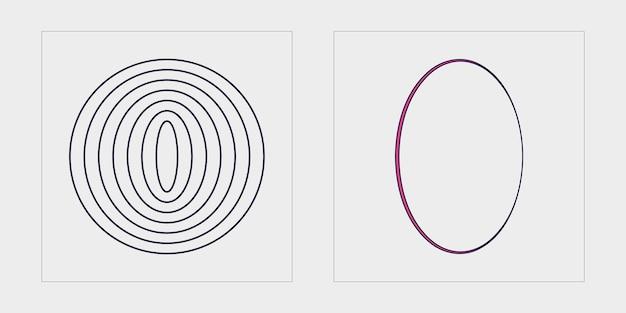Computer graphics has come a long way since its inception, offering us mesmerizing visuals and lifelike animations. But have you ever wondered how graphic designers and software developers are able to create perfect circles on our screens? In this blog post, we’re going to dive into the world of circle drawing in computer graphics.
We’ll explore various methods and algorithms used to draw circles, including the famous Bresenham algorithm. We’ll also answer burning questions like how many pixels are needed to represent a circle and how to convert scans into digital representations. Additionally, we’ll discuss different ways to define a circle and debate the best line drawing algorithm for optimum results.
So, whether you’re a curious enthusiast or a budding graphic designer, join us as we unravel the secrets of drawing circles in computer graphics in the year 2023!

How to Draw a Circle in Computer Graphics
Understanding the Basics
By now, you must have come across some rather geometrically-challenging shapes while exploring the fascinating world of computer graphics. But fear not, even the humble circle can be your ally in creating visually captivating designs! So let’s take a dive into the art of drawing smooth, well-rounded circles in computer graphics.
The Almighty Equation
Believe it or not, drawing a circle on a computer screen requires some mathematical wizardry. The most commonly used method is the Midpoint Circle Algorithm. This algorithm calculates the coordinates for each point along the circumference of the circle, ensuring a perfect and symmetrical form.
It All Starts at Coordinates (0, r)
To draw a circle, we need to define its center point (x, y) and its radius (r). We’ll assume a circle centered at (0,0) for simplicity. The algorithm kicks off by starting at the point (0, r), with r being the radius of the desired circle.
Let’s ‘Plot’ Our Journey
Now comes the fascinating part. Brace yourself as we go through each step to find ourselves marveling at the beauty of a circle materializing right before our very eyes!
Step 1: Initialize Variables
We start by taking the radius value and assigning it to a variable. Let’s call it r. We also set another variable, x, to 0.
Step 2: Calculate the Initial Decision Parameter
To plot the points along the circumference, we need to calculate the initial decision parameter, often denoted as p. The formula we’ll use is p = 1 - r.
Step 3: Begin Plotting
With all initial values set, we can start plotting the points. Our journey begins in a place called Quadrant I. Here’s what you need to do:
- Plot the points (x, y) and (-x, y) to simultaneously capture two quadrants.
- Plot the points (-y, x) and (-y, -x) to cover two additional quadrants.
- Repeat these steps until
xbecomes greater than or equal toy.
Make sure you enjoy the ride and keep track of the coordinates!
Enough Theory, Time to Write Some Code!
Now that we’ve taken the scenic route through the concept of drawing circles in computer graphics, it’s time to dive into some practical coding! The algorithm we discussed can be implemented in various programming languages, ensuring that you create perfect circles, no matter your coding preference.
In the world of Python, you can use the turtle module to bring your circles to life on the canvas. Alternatively, if you’re fond of JavaScript, the HTML5 canvas provides an excellent platform to showcase your circle-drawing mastery.
Patience and Practice Make Perfect
Mastering the art of drawing circles in computer graphics may not happen overnight, but with dedication and practice, you’ll soon find yourself creating beautifully curved shapes effortlessly. So keep calm, code on, and don’t let those imperfect circles get you in a twist. Remember, practice makes perfect, even in the realm of pixels and polygons!
Embrace Your Inner Circle Artist
It’s time to unleash your creativity and explore the possibilities that drawing circles in computer graphics offers. From creating stylish logos to designing captivating characters, the circle is your trusty friend in the world of digital artistry. So grab your coding tools, a cup of coffee, and embark on your journey to become a true circle artist!
Remember, in the realm of computer graphics, the circle is not just a shape; it’s an opportunity to craft wonders and bring your imagination to life.

Frequently Asked Questions: How to Draw a Circle in Computer Graphics
What is the Z-Buffer Method
The Z-buffer method, also known as depth buffering, is a technique used in computer graphics to determine the visibility of objects in a 3D scene. It works by assigning a Z value to each pixel in the image, representing its depth. This enables the computer to accurately render objects that are closer or farther away from the viewer, creating a realistic sense of depth.
How do you Solve the Bresenham Algorithm
Ah, the Bresenham algorithm, a classic in computer graphics! This nifty little algorithm is used to draw lines on a pixel grid with efficiency and accuracy. It calculates which pixels to color in order to approximate a straight line between two given points. By cleverly utilizing integer arithmetic and error terms, the Bresenham algorithm ensures smooth line drawing without the need for heavy floating-point calculations. Pretty neat, huh?
Which is the Best Algorithm Used to Draw a Line
Now that’s a tough question! There are several line drawing algorithms out there, each with its own strengths and weaknesses. However, one algorithm that stands out is the Digital Differential Analyzer (DDA) algorithm. This algorithm uses floating-point calculations to determine which pixels to color along a line. While it may not be as efficient as the Bresenham algorithm, it provides a smooth and visually appealing line drawing experience. So, if you prioritize accuracy and aesthetics over speed, DDA might be your best bet!
How Many Pixels is a Circle
Ah, the mysteries of circles in computer graphics! The number of pixels required to draw a circle depends on its size and the resolution of your display. The larger the circle, the more pixels you’ll need to accurately represent it. However, there’s a nifty formula to estimate the number of pixels needed: multiply the circle’s radius by 2π and divide by the resolution of your display. Voila! You now have an estimate of the number of pixels required to draw that perfect circle.
How do I Convert Scans
Converting scans into digital images is no walk in the park, my friend. It requires a combination of software and hardware tools to achieve accurate and high-quality results. One common method is to use a scanner, which captures the physical image and converts it into a digital format. However, the process doesn’t end there. You’ll often need to use editing software to enhance and refine the scanned image, adjusting the contrast, brightness, and removing any unwanted artifacts. So grab your scanner and software, and get ready to bring your analog treasures into the digital realm!
Which are the Methods to Define a Circle
When it comes to defining a circle in computer graphics, you have a few options up your sleeve. One popular method is using the midpoint circle algorithm. This clever algorithm calculates the coordinates of pixels on the circumference of a circle by leveraging symmetry and a bit of math magic. Another approach is using parametric equations, where you express the x and y coordinates of each pixel on the circle as functions of the angle. This allows for more precise control over the circle’s shape and size. Whether you choose the midpoint algorithm or parametric equations, both methods will help you bring those stunning circles to life on your digital canvas.
Which Line Drawing Algorithm is Best and Why
Ah, the eternal battle of line drawing algorithms! While there isn’t a definitive “best” algorithm for all cases, the Bresenham algorithm we mentioned earlier takes the crown for many situations. Its ability to efficiently draw straight lines using only integer calculations makes it a favorite among computer graphics enthusiasts. However, if you’re looking for smoother lines and have some computational horsepower to spare, the DDA algorithm might be more up your alley. Ultimately, the best algorithm depends on your specific needs and the trade-offs you’re willing to make.
How do you Draw a Circle in Computer Graphics
Ah, the moment of truth! Drawing a circle in computer graphics might sound daunting, but fear not. Here’s a simple approach:
- Initialize the center coordinates and radius of your circle.
- Set up a loop to iterate over the range of angles (e.g., from 0 to 360 degrees).
- Inside the loop, calculate the x and y coordinates of each pixel on the circle’s circumference using your chosen method (e.g., midpoint algorithm or parametric equations).
- Plot or color the calculated pixel coordinates to create the circle’s shape.
- Repeat the process until you’ve covered all the desired angles.
- Voila! You’ve successfully drawn a circle in computer graphics.
Remember, practice makes perfect! So don’t be discouraged if your first circle looks a bit wonky. Keep experimenting and refining your technique, and soon you’ll be drawing circles with finesse in the exciting world of computer graphics!
